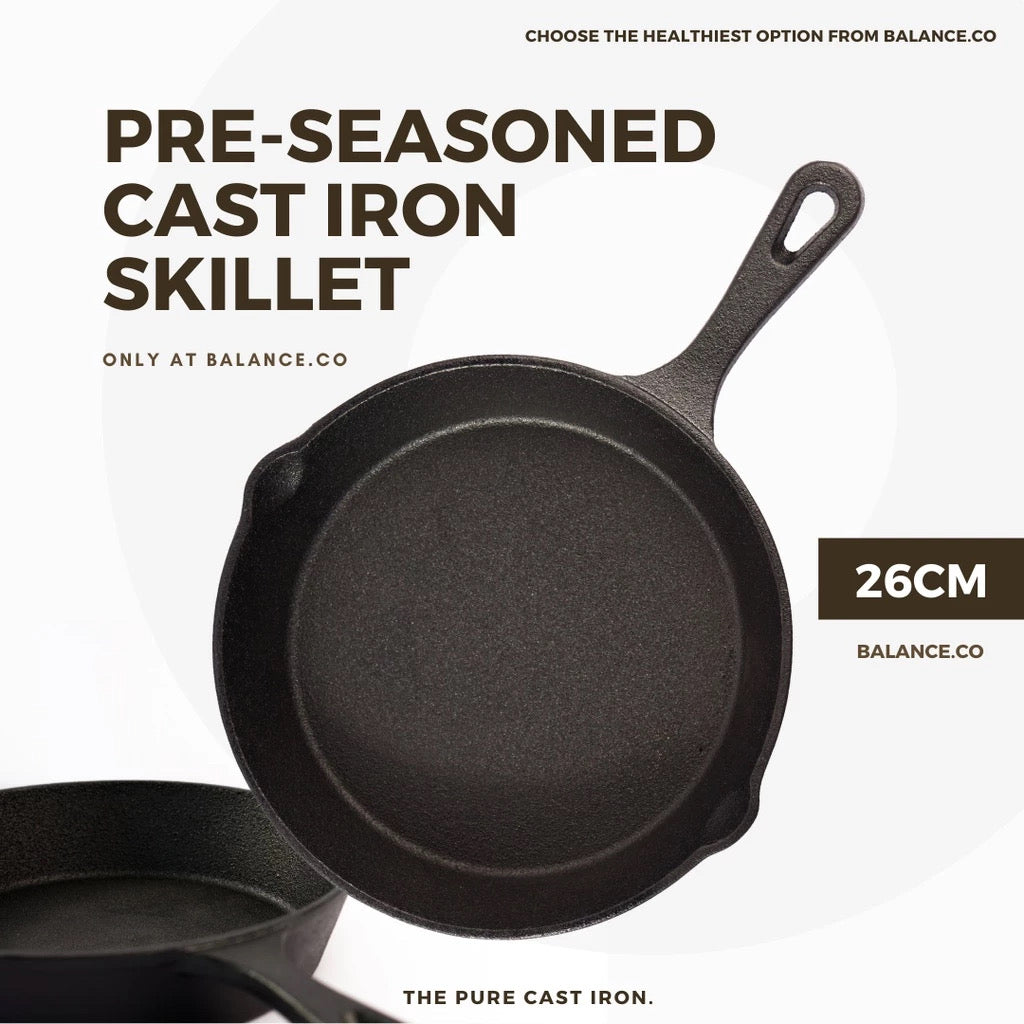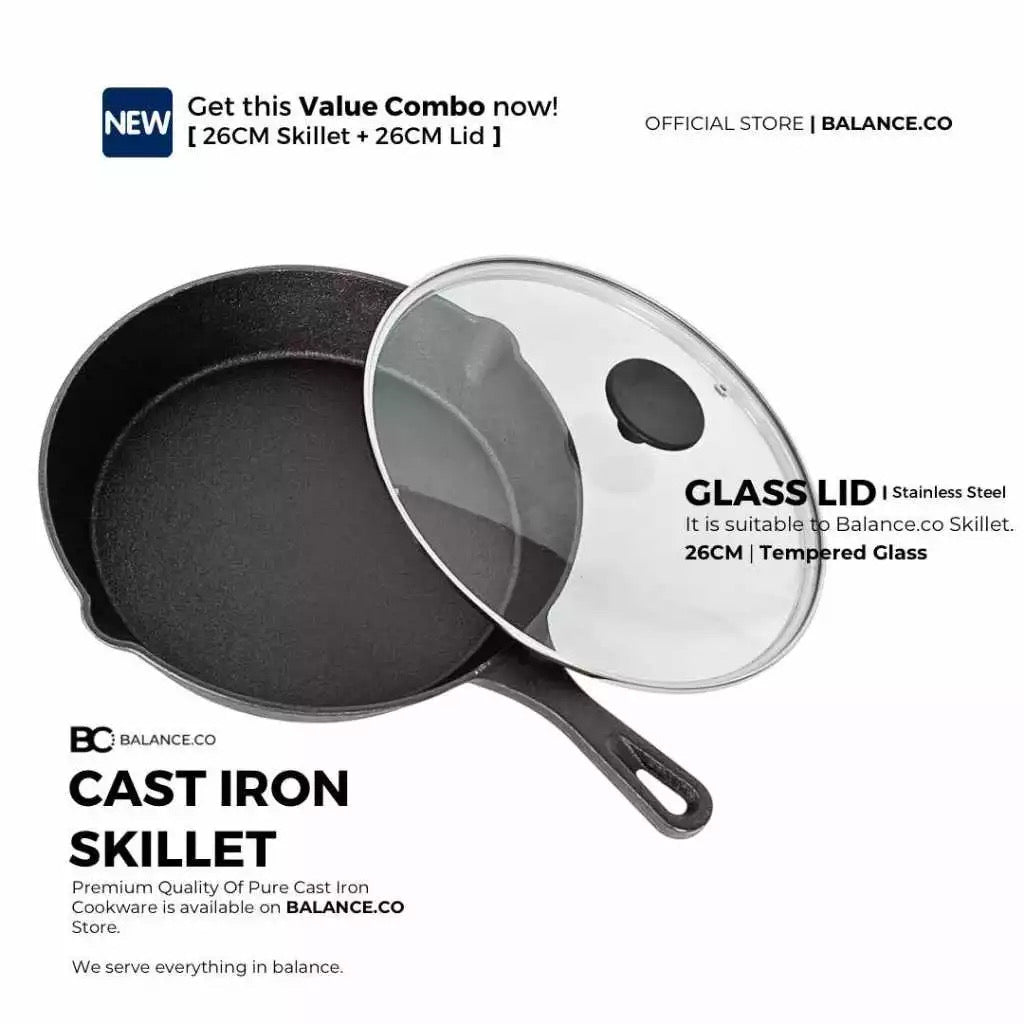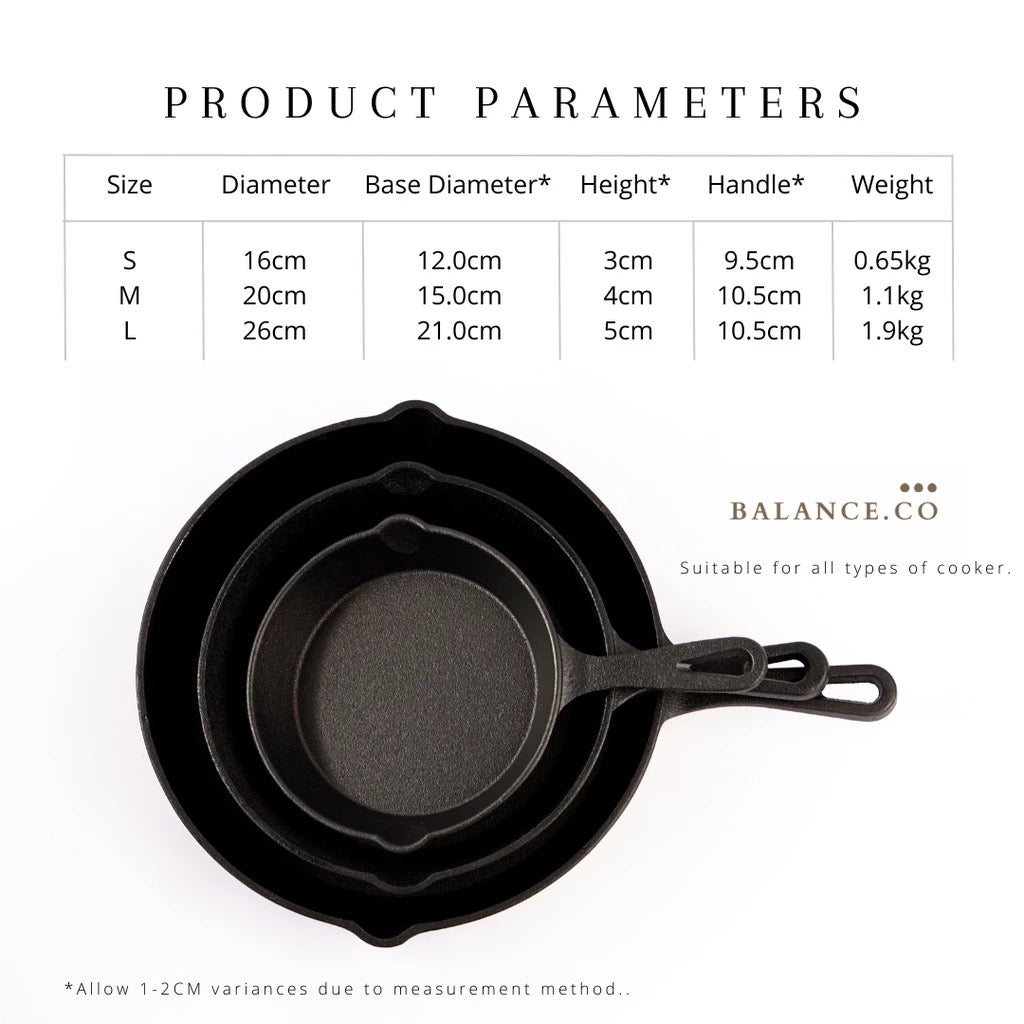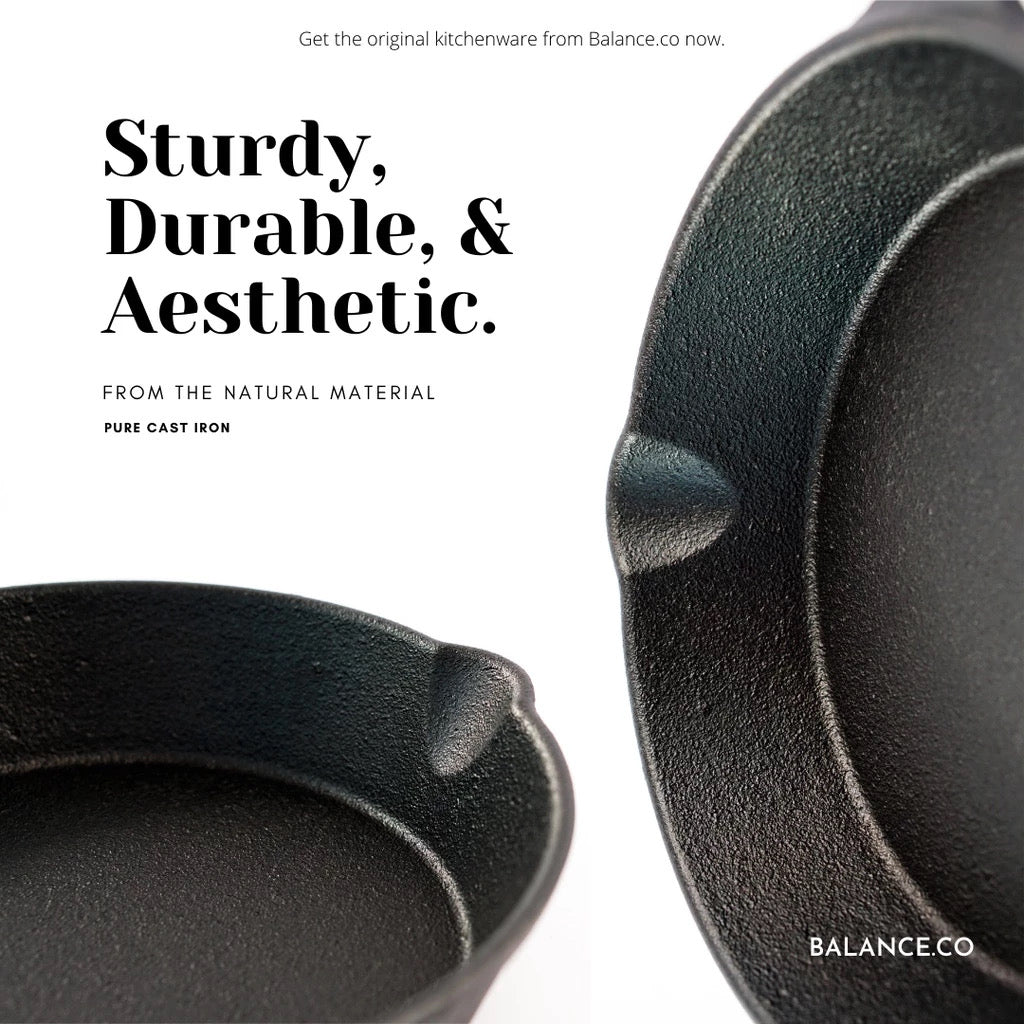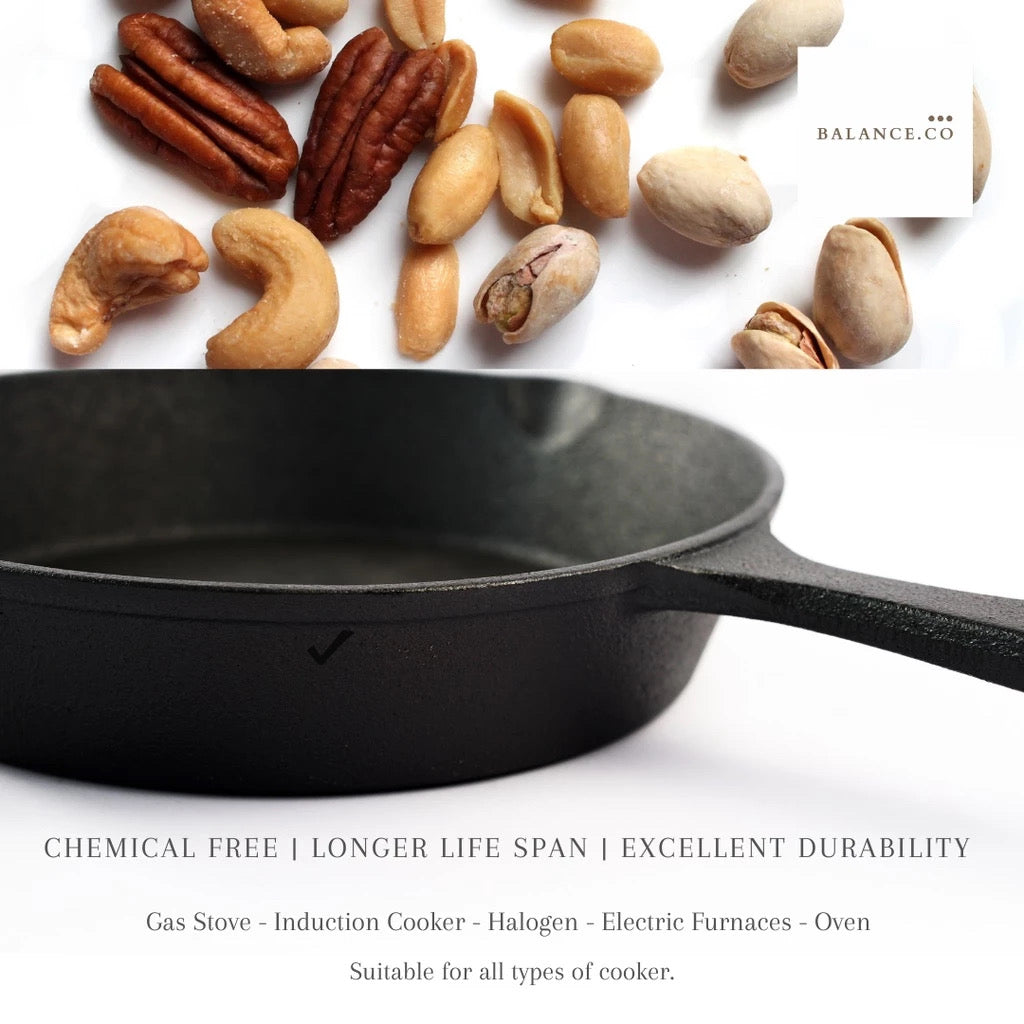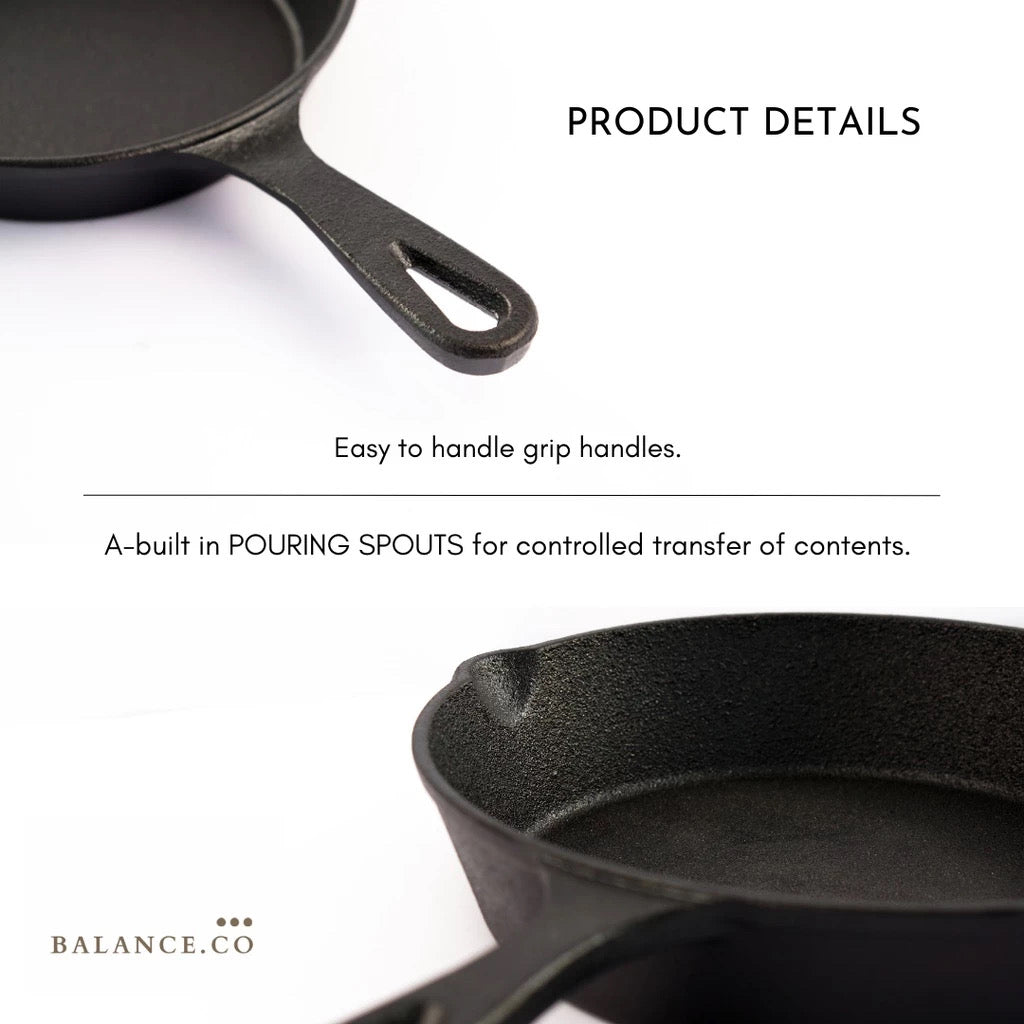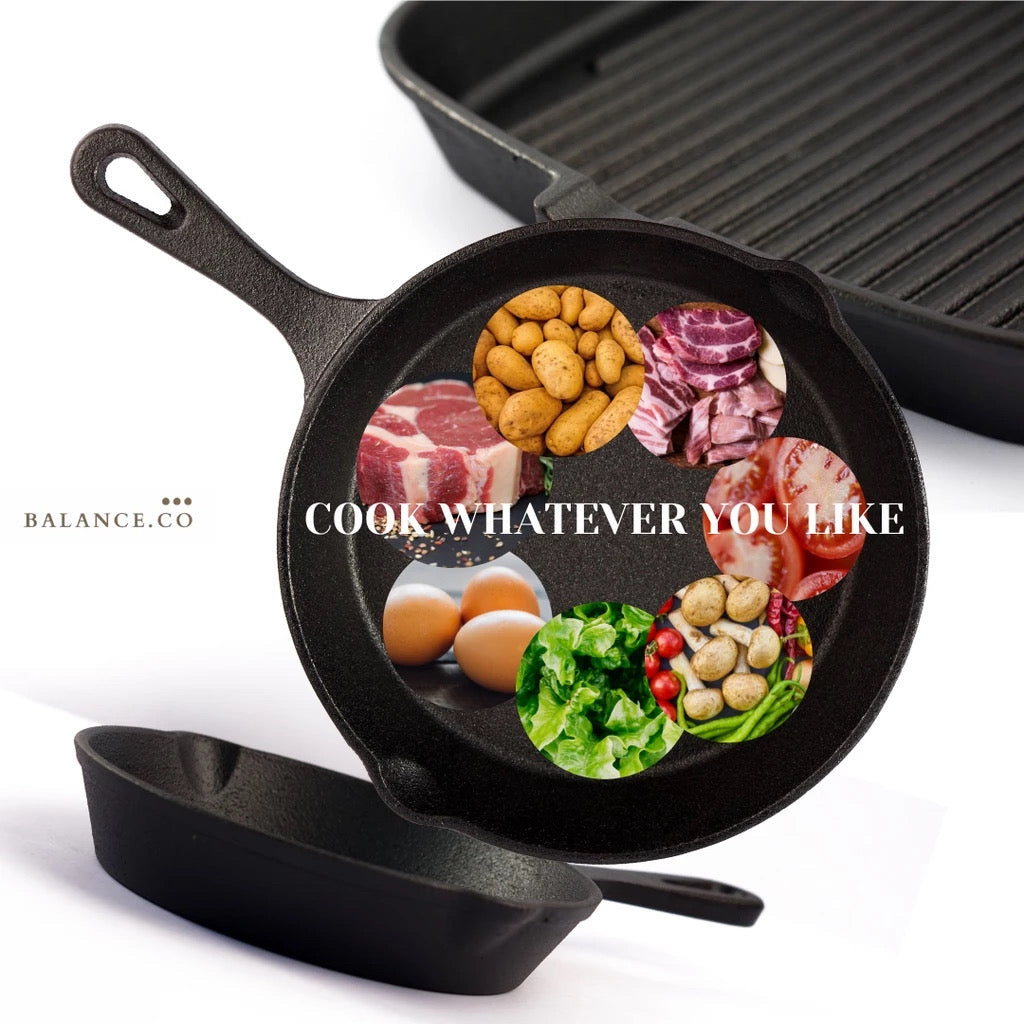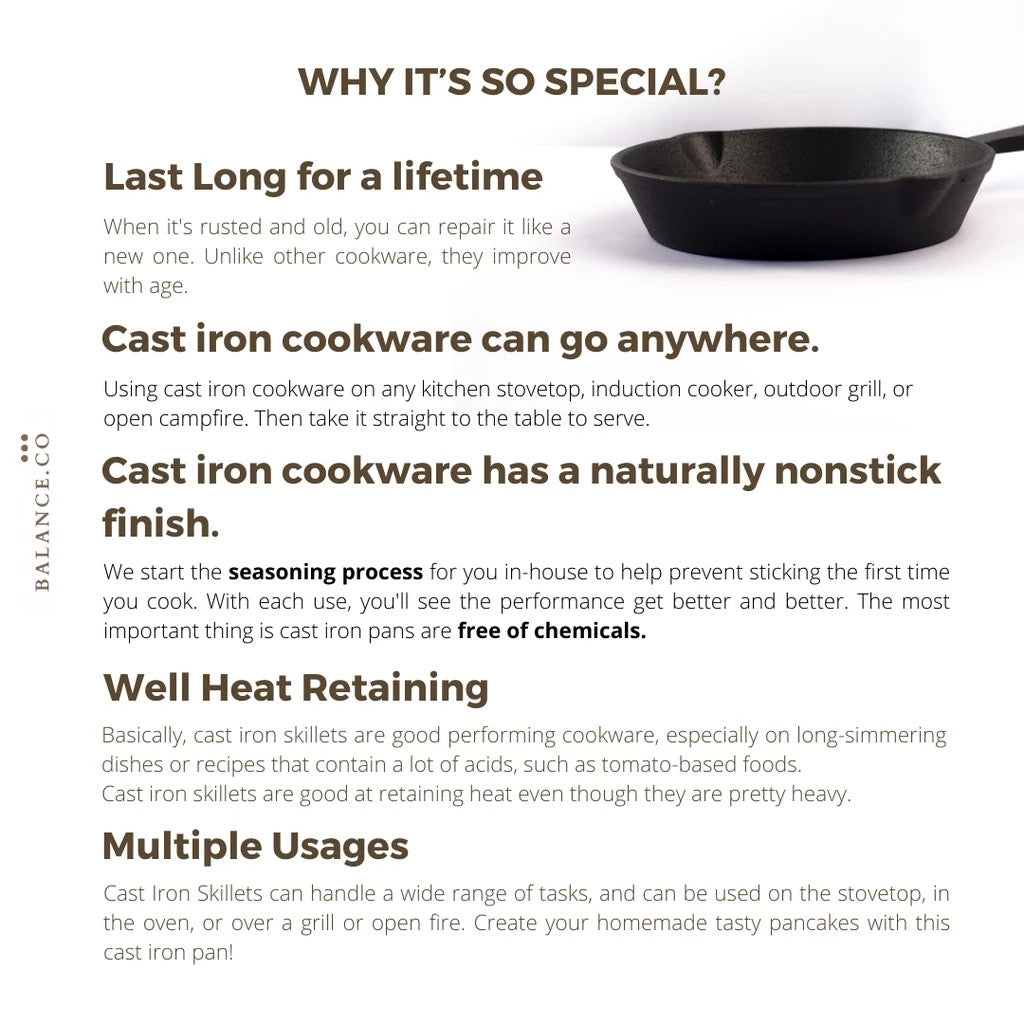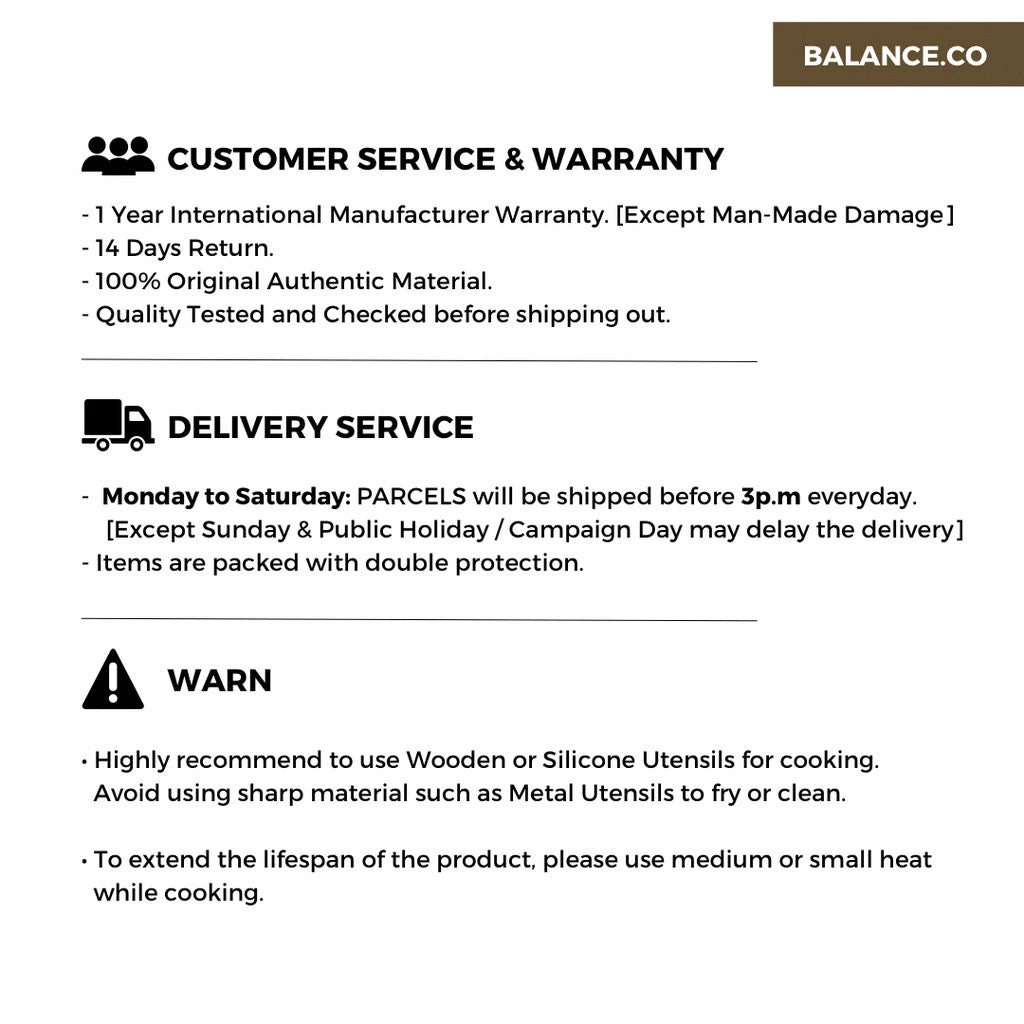My Store
26CM Premium Pre-Seasoned Cast Iron Skillets
26CM Premium Pre-Seasoned Cast Iron Skillets
Couldn't load pickup availability
Product Specification:
-
Weight: 1.9kg~2.0kg (Approx.)
Note: Weight may vary due to different batches of production. - Dimensions (with spout): 36.5 cm (L) x 27 cm (W) x 5.2 cm (H)
- Dimensions (without spout): Approx. 26 cm
- Thickness: 0.40 cm
- Handle Length: 11 cm
- Capacity: 1.5 L
Packaging:
- Type: Box
- Packaging Weight: 2.3 kg
Compatible Stoves & Hobs:
- Gas, Induction Cooker, Ceramic, Electric Plate, Oven, and Gas on Glass
(Note: Not suitable for microwave or dishwasher use.)
What's in the Box:
- 1 x 26 cm Cast Iron Round Skillet
What is Pre-seasoned Cast Iron?
Pre-seasoned cast iron refers to a skillet that has been coated with a protective wax or oil layer during manufacturing to prevent rust. This is often called "factory seasoning." However, customers still need to clean and re-season it before the first use to improve non-stick performance.
Steps to Re-season the Skillet After Purchase:
- Wash your new skillet with soap and a brush to remove any factory residue.
- Rinse thoroughly with water.
- Dry the skillet with a cloth.
- Heat it on the stovetop until it’s smoking hot to ensure it's completely dry.
Important: Water can cause rust, so make sure the skillet is fully dry. - Apply a thin, even layer of cooking oil (inside and outside).
Note: Wipe off any excess oil to avoid a sticky surface. - Hang or store it to dry, ready for its next use.
4 Mistakes to Avoid When Cooking with a Cast Iron Skillet:
-
Not Preheating the Skillet:
Always preheat the skillet before cooking. Putting cold food on a cold skillet will cause it to stick. -
Skipping the Grease:
After heating, apply butter or lard. It enhances the flavor and helps maintain the skillet’s non-stick properties. -
Moving the Food Too Soon While Searing:
When searing, avoid moving the food constantly. Let it sit to form a good crust. -
Flipping the Food Too Early:
Only flip the steak when a thin, brown crust has formed on the outside for the perfect sear.
How to Clean a Cast Iron Skillet After Cooking
Important: Do not use soap, steel wool, or put it in the dishwasher.
Why? Soap removes the skillet's seasoning (the non-stick layer), and steel wool can scratch the surface, making it rust.
But if you really want to use soap or steel wool:
If you decide to use soap or steel wool, you’ll need to re-season the skillet afterward. Just rub a thin layer of oil all over the skillet (inside and outside), then heat it on the stove or in the oven until the oil forms a protective layer.
- Immediately after cooking, pour hot water into the hot skillet.
- Gently scrub the skillet with a sponge or stiff nylon brush (use tongs to avoid burns).
- Rinse with hot water.
- Sprinkle some salt in the pan and add a little hot water.
- Use a wooden spatula to scrape off any tough stains.
- Rinse thoroughly with water.
- Dry the skillet completely with a towel, then heat it on low on the stovetop.
- Apply a thin layer of oil to season it (both inside and outside), and store it in a dry place.
Share
